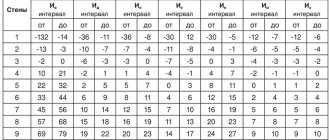- EPI Test: General Information
- Take the Eysenck temperament test
- Decoding EPI test results
Temperament types are one of the most famous personality typologies. Even those who are very far from psychology know about the existence of sanguine people, phlegmatic people, choleric people and melancholic people. And one of the most famous temperament tests
can be called
the Hans Eysenck personality questionnaire , or Eysenck Personality Inventory - EPI . You can take this test online on our website – it is presented below.
EPI Test: General Information
As you know, Hippocrates, who described 4 types of temperament, took as the basis for his classification how bodily fluids affect a person: blood, lymph and bile. The approach of Hans Eysenck, also known as the creator of the IQ test, meets modern ideas about temperament types.
According to his theory,
temperament is determined by two main indicators - extraversion/introversion and neuroticism
.
As for the first indicator, it is unlikely to raise questions. This scale will tell you whether you are an introvert or an extrovert. In turn, neuroticism
– a scale reflecting emotional stability or instability, reaction to external stimuli and/or stress. A person with a high level of neuroticism is characterized by strong emotional reactions, emotional instability, mood swings, irritability, impulsiveness, etc.
The EPI test appeared in 1963, and a few years later Hans Eysenck, together with Sibylle Eysenck, created the EPQ (Eysenck Personality Questionnaire), also known as PEN (Psychoticism, Extraversion, and Neuroticism)
. As the name suggests, in addition to the two indicators described above, psychoticism was added to them. You can also take this questionnaire on our website.
Studies
He received his education in European private schools. Often loving to demonstrate his superior knowledge over teachers who graduated from military universities, he was also superior to many physically. So, after he expressed his disapproval of fascism and Hitler in particular, the school staff beat him up with almost the entire staff. However, his answer to the offenders was also not long in coming. The teachers had difficulty hushing up the scandal, which threatened to turn into a massacre.
After graduating from high school, he was accepted into the Faculty of Philosophy at the University of Berlin. However, there they persistently hinted at the need to join the SS, so his mother and stepfather (a Jewish director) decided that it would be better to leave the country. At the University of Dijon, in France, he studied history and literature, and the next year he entered the University of London, in England. There Eysenck asked to study at the Faculty of Physics, but after a course in history and philosophy he could only be accepted into psychology. He agreed to agree, but caused quite a scandal in the process.
Thanks more to his ability to talk on any topic and self-confidence than to actual knowledge, he graduated from the university with honors and received a red diploma. Professors dubbed him “the hope of future science” and gave him good recommendations, and several private colleges even invited him to give lectures.
Hobbies of Ph.D.
The biography of Hans Jurgen Eysenck tells the story of his passionate youthful interest in astrology. Naturally, he approached this issue with all the seriousness of a research scientist. The study of astrological charts was carried out with the same goal: to find a pattern that contributes to the development of talent. While studying the topic, Eysenck corresponded with many famous astrologers. He drew up and mailed cards to some representatives of the Reichstag warning them of the collapse of all their plans. But there was no answer.
Observations of fascism and the radical left led the scientist to the conclusion that these groups are more similar than different. Both had an authoritarian management style, rigidity and intolerance of dissent, in contrast to the control group. Perhaps this hypothesis only strengthened the scientist’s belief in the importance of the biological component in the nature of intelligence.
Heritage
“I used to be anti-establishment in favor of the rebels. I am inclined to think that on these points the majority were wrong, and I was right,” Hans Jurgen Eysenck.
He played a central role in scientific discussions on the heritability of intelligence and the effectiveness of psychotherapy, emphasizing the role of neurophysiological and genetic factors in relation to individual differences in behavior. He has made major contributions to the fields of criminology, education, psychopathology and behavior change.
Eysenck is an extremely prolific author, having published approximately 45 books and 600 scientific articles, and founded and edited the journals Personality and Individual Differences and Behavior Research and Therapy. He also loved to sell his books himself, sitting like a proprietor in bookstores, signing autographs for his fans, and arguing with customers until he was hoarse.
Personality and politics
Eysenck extended his early success in gaining control of personality through factor analysis into the political sphere. Although he subsequently published several more articles, his 1954 book The Psychology of Politics remained his major statement in the field. Eysenck summarized social and political relations with two bipolar dimensions. One dimension made the usual distinction between radicalism and conservatism, and the other contrasted hardness and tenderness, following the thinking of William James. This led to the creation of a four-quadrant space, the most provocative consequence of which was that the extremes of fascism and communism were separated by ideology but similar in terms of personal style. For Eysenck, this balanced the political picture, explaining the “same but different” paradox he saw in pre-war Germany. His work clashed directly with post-war studies of the authoritarian personality, with Eysenck controversially arguing that Theodor Adorno and his co-authors' measure of fascist potential in The Authoritarian Personality (1950) was virtually synonymous with rudeness. This led to a contentious, highly technical debate with Milton Roach and Richard Christie about the reality of left-wing authoritarianism in Western democratic societies.
CLASSIC IQ TESTS
Answers and explanations
Test No. 2
question 1
Fill in the missing number.
8 12 16 20 _
Answer: 24. (Each next digit is 4 more than the previous one.)
question 2
Which of the six numbered groups should take the empty seat?
Answer: 3. (The circles decrease by one element in each row.)
question 3
Choose the extra word.
lion fox giraffe herring dog
Answer: Herring. (This is the only fish among mammals.)
question 4
Fill in the two missing numbers.
6 9 18 21 42 45 _ _
Answer: 90 and 93. (The series is formed by alternately adding the number 3 and multiplying by the two previous terms; 45 2 = 90, and 90 + 3 = 93.
question 5
Choose the extra word.
Jupiter Apollo Mars Neptune Mercury
Answer: Apollo. (This is the only Greek god among the Roman ones.)
question 6
Choose a city that is not in Europe.
BURBT NAYIF NEPKI OSMAKV NEVA
Answer: Beijing. (Milan, Athens, Moscow and Vienna are in Europe.)
question 7
Place the missing word in brackets.
Chocolate (sweet) dream
Roar (…….) gape
Answer: Lion. (The central word forms a semantic chain between the words that are outside the brackets.)
question 8
Place in brackets a meaningful word that completes the first word and begins the second (hint: plant).
ON (...) INA
Answer: Bob.
question 9
Which of the six numbered pieces should take the empty space?
Answer: 5. (The figures in the bottom row are the same as in the top row, but the black and white areas are swapped.)
question 10
Fill in the missing letter.
A G J L S _
Answer: Sh. (G is the third letter from A, Zh is the fourth letter from G, L is the fifth from Zh, S is the sixth letter from L, and Sh is the seventh from S.
question 11
Enter the missing number.
Answer: 39. (Each number, starting with 3, is twice the previous one minus one, minus two, minus three, and so on. 22 2 = 44; 44 – 5 = 39.)
question 12
Select the extra shape.
Answer: 4. (1 and 3 form a pair, just like 2 and 5. In each pair, one figure is rotated 90 degrees, and the black and white areas are swapped. Figure No. 4 does not fit into this scheme.)
question 13
Fill in the missing number.
Answer: 22. (To get the bottom number in each domino, double the top number and subtract 1, 2, 3 and 4 for the first, second, third and fourth dominoes respectively. 13 2 = 26; 26 – 4 = 22.)
question 14
Insert a word that matches any prefix shown on the left.
Answer: Race or move (with the prefix dis- instead of dis-).
question 15
Place the missing word in brackets.
long (….) sea
Answer: Scythe. (The central word forms a semantic chain between the words that are outside the brackets.)
question 16
Which of the six numbered pieces should take the empty space?
Answer: 4. (There are three kinds of head, three torsos, three tails, and one, two, or three whiskers. Each type appears only once in one row or column.)
question 17
Enter the missing number.
Answer: 13. (Add the first and last digit in each row to get the center digit.)
question 18
Choose the extra word.
crab fleece stop prize crust tuff
Answer: Prize. (In all other words, the last two letters follow each other in alphabetical order.)
question 19
Place in brackets a meaningful word that completes the first word and begins the second.
MA (...) AR
Answer: Dream.
question 20
Choose a combination that does not form the name of the island.
BAKU PIKAR AKLOCHAST AGAXARDAM
Answer: Swallow. (The islands are Cuba, Capri and Madagascar.)
question 21
Fill in the missing number.
Answer: 16. (Take the number at the top, divide it by the one on the right, and double the result.)
question 22
Select the extra shape.
Answer: 2. (The first and fifth figures are the same, just like the third and fourth.)
question 23
Place the missing word in brackets.
19 (base) 12
12 (….) 18
Answer: Toad. (The numbers represent letters in alphabetical order - for example, 1 represents A, and so on. The numbers are then read in reverse order to form a word.)
question 24
Insert in brackets a word that means the same thing in context as the two words outside the brackets.
tree (...) nervous
Answer: Tick. (Teak is a type of wood and a symptom of a nervous disorder.)
question 25
Fill in the missing numbers.
PARIS 35412 FAT 325 PAIR 576
RZHA_
Answer: 758. (The numbers after the word "Paris" arbitrarily correspond to the letters of this word; the words "fat" and "steam" are made up of the letters of the word "Paris", and the numbers after them correspond to the letters in the original word, but in the word "fat" they all are increased by 1, in the word “steam” - by 2, and in the word “rust” - by 3.)
question 26
Fill in the missing letter.
N R L T Y _
Answer: F. (The number of letters of the alphabet contained between the letters in the sequence is 2, 4, 6, 8 and 10, with the direction alternating from forward to backward (that is, first from A to Z, and then from Z to A). Alternating letters jump one at a time up and down the alphabet; in the sequence N, R, L, T, Y, the next letter will be F.)
question 27
Which of the five numbered pieces should complete the top row?
Answer: 2. (The original circle is divided in half and the original square is rotated 45 degrees and placed on top of the semicircle. Similarly, the large square is divided in half to form a rectangle, and the diamond is rotated 45 degrees and placed on top of the rectangle. Also, the shading on the original figure is removed on the second figure, and vice versa.)
question 28
Place the missing word in brackets.
OK (PLOT) PU
IT (….) ST
Answer: Course. (The letters before the parentheses precede the first two letters of the word in parentheses, and the letters outside the parentheses follow the last two letters of the word in parentheses. I precedes K and T precedes Y; C follows P and T follows S.)
question 29
Place in brackets a meaningful word that completes the first word and begins the second.
TO (…) CENTER
Answer: Paradise.
question 30
Which of the six numbered pieces should take the empty space?
Answer: 1. (Each cross outside the rectangle counts as plus one; each cross inside the rectangle counts as minus one; in the bottom row +3 - 1 = +2. Accordingly, two crosses outside the rectangle give the correct answer.)
question 31
Which of the five numbered pieces should take the empty space?
Answer: 2. (There are no right angles in this figure.)
question 32
Enter the missing number.
8 17 5
12 _ 6
10 11 9
Answer: 2. (The sum of each row or column is 30.)
question 33
Choose the extra word.
perfume neatness primness shampoo
Answer: Shampoo. (The remaining three words are associated with national qualities: French perfume, German neatness, English stiffness.)
question 34
Insert the missing number.
Answer: 52. (In the second figure, the numbers are half smaller than in the first; in the third they are twice as large as in the first. 26 2 = = 52. The positions of the numbers in the sectors do not coincide; they shift by one point each time.)
question 35
Place the number and letter on the last domino in the series.
Answer:
(The numbers increase by one; each subsequent letter is spaced from the previous one in the alphabet by the number of positions indicated above. Z is the fourth letter from G, M is the fifth letter from Z, and so on.)
question 36
Choose the word that should complete the sentence.
Appetite for food is like lust for ___
the power of sex the power of gluttony drinking
Answer:
Sex. (Lust means sexual appetite.)
question 37
Insert in brackets a word that means the same thing in context as the two words outside the brackets.
map (...) boat
Answer: Ace. (Tuzik is a four-oared sloop, yawl.)
question 38
Insert the word to complete the sentence.
Palimpsest is to palindrome as erasure is to ________ repetition reverse release decrease resale
Answer: The opposite. (A palimpsest is a manuscript in which the original text has been erased for reuse. A palindrome is a word or phrase that reads the same way backwards as well as forwards, such as OTTO.)
question 39
Fill in the missing letter.
B D _ P W
Answer: I. (In alphabetical order these are the 2nd, 5th, 10th, 17th and 26th letters. These numbers are the squares of the first five digits (1, 2, 3, 4, 5) plus units. 32 = 9; 9 + 1 = 10, and the 10th letter of the alphabet is I.)
question 40
Insert the number that completes the series.
7 9 40 74 1526 _
Answer: 5436. (There are two series here, which begin with 7 and 9 respectively, and then switch places. In the first series, you need to square 7 and subtract the number following 7 in this sequence - that is, 72 - 9 = 40 Next, 402 - 74 = 1526. In the second series, you need to square 9 and subtract the number preceding 9 in this sequence - that is, 92 - 7 = 74. To get the missing number, square 74 and subtract 40; you get 5436.)
Becoming a scientist
What contribution did Eysenck Hans Jürgen make to science? Currently, few people think about the emergence of such familiar concepts and phenomena. However, some of them began to exist not so long ago. Eysenck watched with bated breath, as far as possible, the genetic experiments carried out at Ahnenerbe. The young scientist had the opportunity to conduct brain research himself with the intention of identifying a correlation between brain size and human intelligence. Such experiments have so far not led anyone to establish any patterns, but Hans needed to make sure of this.
Personality, smoking and illness
Eysenck's other important initiative after his retirement was to study the relationship between temperament and physical health. In the early 1960s, a collaboration with oncologist David Kissen suggested a link between cancer and personality. Eysenck soon attracted more attention by stating that the causative role of cigarettes in cancer had not been convincingly proven. Eysenck received a boost of criticism from public health advocates as the anti-smoking message became more visible and compelling in the late 1960s.
Eysenck revisited the issue in the early 1980s and presented new genetic evidence linking personality, smoking and disease. In a series of papers in the late 1980s and early 1990s, Eysenck and the little-known Yugoslav researcher Ronald Grossart-Maticek reported a series of longitudinal studies apparently demonstrating a striking link between personality types and cancer and coronary heart disease. Although Eysenck did not organize these studies, his contributions helped fine-tune the presentation and analysis. There have been a number of interventions suggesting that psychotherapy can have surprisingly beneficial effects for cancer patients and people with unhealthy lifestyles. While the scope and ambition of these investigations was welcomed, critics complained of a lack of methodological control and descriptive detail. Some, such as Anthony Pelosi and Louis Appleby, even suggested that the results were "too good to be true."










